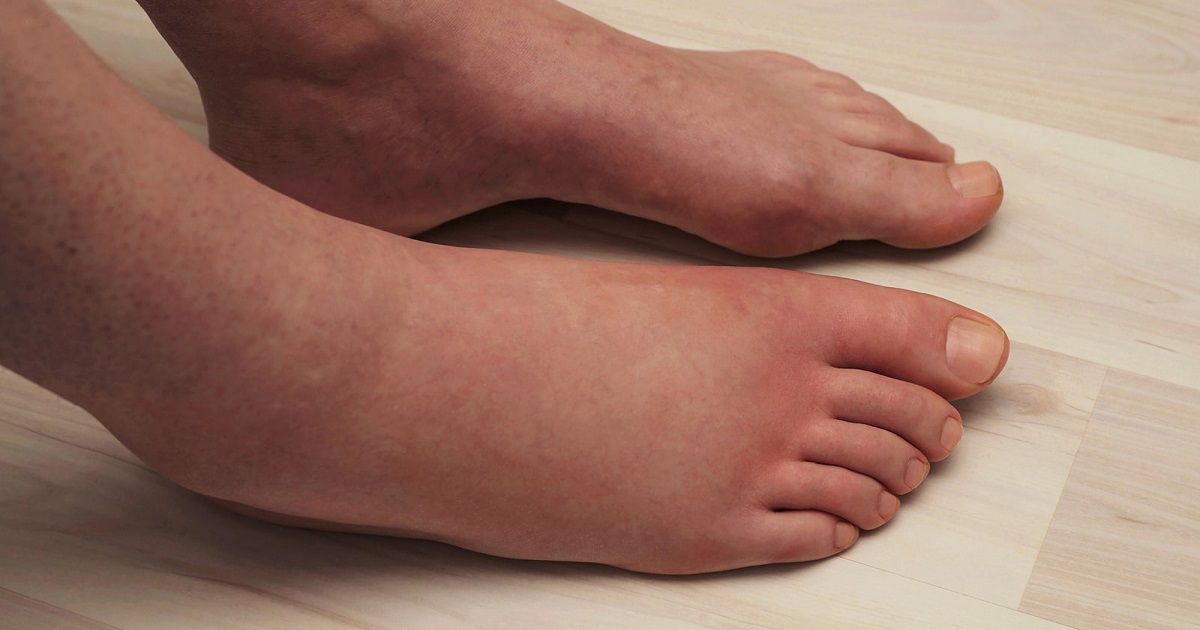What Are The Symptoms And Complications Of Compartment Syndrome?
Compartment syndrome is a disorder that occurs when the pressure inside one of the body's strong connective tissue membranes becomes too high. Different regions of the body are separated into compartments called fascia that hold all of the comprising organs, muscles, and tissues in their respective places. Because the fascia has this function, it is not easily able to expand like other types of tissue. Numerous mechanisms can cause increased pressure including traumatic injury, internal bleeding, edema, excessive swelling, broken bones, burns, overly tight bandaging, surgical repair of blood vessels, blood clots, vigorous exercise, use of anabolic steroids, abdominal surgery, sepsis and other infections, abdominal bleeding, and pelvic fracture. Compartment syndrome can occur in the arms, hands, legs, feet, or abdomen. Diagnosis is made with a physical exam, laboratory tests, diagnostic imaging, and direct measurement of the pressure inside of the affected compartment.
Several common symptoms and complications occur in individuals affected by compartment syndrome. Learn about them now.
Pins And Needles Sensation

Compartment syndrome patients feel the pins and needles sensation in the affected area. Nerves throughout the body send impulses through the main nerve that feeds the general region, and then the main nerve runs to the spinal cord. The spinal cord then transmits signals to the individual's brain so they can be interpreted. If there is an interruption in this pathway of the nerve impulse, the impulse will not make it to the brain correctly. Compartment syndrome occurs when one or more mechanisms cause the pressure to increase excessively inside of one of an individual's fascia compartments because the fascia is not flexible enough to expand. The pressure causes the tissues, muscles, and organs to become displaced and puts pressure on the nerves inside the compartment. Compressed nerves are not able to properly perform their function of impulse transmission between one another, causing a disruption in the nerve pathway through which the impulse travels. This malfunction causes the impulses that contain the information about sensation to become fully or partially obstructed from reaching the patient's brain. The partial impulses cause misfiring of the nerves resulting in a pins and needles sensation.
Read more about the symptoms and complications linked to compartment syndrome now.
Greater Pain Than Expected For The Injury

A characteristic symptom that occurs in compartment syndrome patients is the feeling of greater pain than expected for the injury they have incurred. The injury that causes compartment syndrome can be blunt force or penetrating trauma. The injury can occur to the organs, muscles, bones, nerves, blood vessels, and other connective tissues inside the fascia. While almost any type of injury causes an inflicted individual to feel the sensation of pain, there is a reasonable threshold expected for different types of injuries. An individual with compartment syndrome precipitated from any sort of injury will feel pain as a result of the injury itself, pain from the inflammatory response their body has to the injury, and pain from the compression of the nerves that occurs from compartment syndrome. Severe compartment syndrome can cause an increased degree of pain in a patient when the nerves are not only compressed but when the nerves become damaged as well.
Discover additional symptoms and complications of compartment syndrome now.
Swelling And Tightness

Individuals affected by compartment syndrome commonly experience swelling and tightness in the affected region of the body. Mechanically, compartment syndrome involves the displacement of a fluid or other substance in the tissues inside the fascia that cause it to be unable to hold its volume at a reasonable pressure level. There is a marked increase in the amount of physical matter contained inside the fascia membrane in compartment syndrome patients. The displacement of matter causes the structures inside the fascia to compress against each other, resulting in the surrounding nerves sending this information to the brain. The brain interprets this nerve information and results in the patient feeling a sensation of tightness in the affected area. Swelling occurs when the immune system responds to an infection, foreign body, or cellular damage and injury. There is an increased volume of blood that rushes to the site because the blood vessels expand and allow for this. There is also easier permeability of the vessel walls that causes fluid leakage into the surrounding tissues. Because of these mechanisms that occur inside and around the affected fascia in compartment syndrome, the affected area will appear swollen.
Learn more about complications that can arise due to compartment syndrome now.
Permanent Nerve Damage And Loss Of Function

Permanent nerve damage and loss of function is a serious and sometimes permanent complication that occurs in individuals affected by compartment syndrome. Compartment syndrome is the result of an excessive amount of pressure buildup inside of one the body's fascia membranes. The pressure causes the organs, bones, muscles, and any other tissue inside of the fascia to compress against each other and the fascia walls. Therefore, the blood vessels and the nerves that run throughout all of these tissues become squeezed or compressed. Nerves that are compressed for an extended period will experience disintegration of their blood-nerve barrier. This barrier functions to protect and keep the interior of the nerve isolated from anything on its exterior. The breakdown of this barrier allows fluid to accumulate in the interior of the nerve cell, which results in increased pressure and swelling. The nerve eventually becomes inflamed from the swelling and incurs damage. If the compression continues, the nerve loses its supply of oxygen and can die. This process is what causes a compartment syndrome patient to experience permanent nerve damage that results in the loss of tissue function.
Uncover the next potential compartment syndrome complication now.
Amputation

Severe cases of compartment syndrome can cause a patient to have to undergo an amputation of the affected limb. When pressure accumulates in the fascia and causes blood flow restriction in the comprising tissues, the tissues can become extensively damaged or actually start to die. This tissue death can occur as a result of oxygen deprivation because the blood carries oxygen, and not enough blood can flow through the blood vessels compressed as a result of the high-pressure levels in the fascia. In some cases, an entire muscle can die when enough of its comprising tissue either dies or becomes too damaged for repair. If a surgeon determines an emergency fasciotomy is required, the skin and fascia are both opened up at the beginning of the surgical procedure. Part of the procedure involves the removal of any dead tissues inside of the fascia. If the surgeon finds too much tissue has died or become irreversibly injured, they may elect to amputate the entire limb. This decision is made because large amounts of tissue that die inside of the body, such as a muscle, release extremely harmful toxins. These toxins are filtered from the individual's blood by their kidneys. These substances are so toxic that they damage the kidneys and quickly cause kidney failure. Amputations are only done in cases of compartment syndrome where it is deemed a lifesaving procedure.